Preparedness Challenge Week 29
Thanks for joining the 2022 Preparedness Challenge!
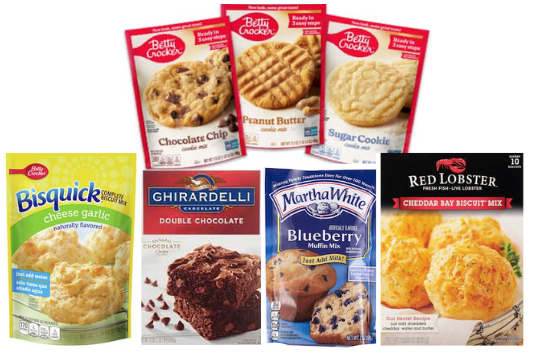
This week the preparedness challenge is to add baking mixes—muffin mixes, cake mixes, brownie mixes, cookie mixes, biscuit mixes, etc. to your food storage. These mixes can be purchased or prepared from scratch and will add variety to your preparedness food plan.
How Many Baking Mixes Should You Store?
Baking mixes are a convenience that can make preparing food simpler, a welcome benefit in an emergency. How much should you store? The answer will depend on several factors. How often do you typically use baking mixes? How large is your family? How long do you anticipate needing to rely on your stored food?
Estimate how many baking mixes you might use in one month. To make it simple, begin by purchasing enough mixes for one mix per week for three months. Select a variety of baking mixes that your family enjoys.
This week’s preparedness challenge is to add twelve baking mixes to your food storage, enough for one mix per week for three months.
Make a Storage Bucket Containing Prepared Mixes
Purchase several boxes or packets of mixes, label each mix with the date of purchase, and store them together in a large plastic storage container to help keep them organized. Storing in a container will protect against moisture and insect infestations and will prolong their storage life. Store paper or cardboard containers in one-gallon resealable plastic bags to minimize absorbing aromas from other items and to add an additional level of protection.
What is the Shelf Life of Prepared Mixes?
Manufacturers stamp a “best-If-used-by” date on most packaging. This is only a recommendation for optimum quality, not an expiration date. If baking mixes are stored in a cool, dry place, in an airtight container they will last beyond that “best-by” date. Ideally, use mixes and replace them in a rotation schedule within one-and-a-half to two years.
Tips for Preparing Baking Mixes
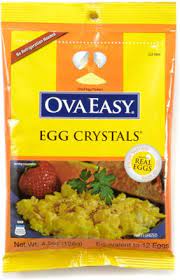
To make preparation simple, when possible, choose mixes that only require adding water, milk, or oil. Water should be easy to obtain, milk can be easily reconstituted from dry milk, and oil is an easy-to-store storage food. Some mixes that you might want to include call for the addition of eggs, and in some emergencies you may not have fresh eggs available.
Dehydrated eggs are an easy-to-use option. They can be added directly to the dry mix or reconstituted first. Dehydrated eggs are very susceptible to moisture and oxidation, and once a can or packet of dehydrated eggs is opened, the eggs deteriorate quickly. For this reason, choose the smallest packaging that meets your needs. Larger cans are often more economical, so another option is to repackage dehydrated eggs in smaller Mylar bags with oxygen absorbers.
What Can Be Substituted for Eggs in Baking Mixes?
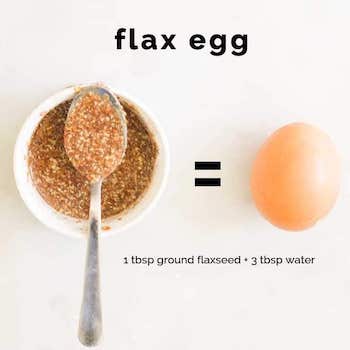
The purpose of eggs is to hold the batter or dough together. Applesauce, sour cream, yogurt, nut butter, and mashed bananas can all be substituted for eggs. Chia seeds and flax seeds, ground and mixed with a little water are also substituted for eggs. Even just increasing the water will often work.
- 1 tablespoon of ground flax seed + 3 tablespoons of water = 1 egg
- 1 tablespoon of flax seeds + 3 tablespoons of water = 1 egg
- 1/4 cup of fruit puree = 1 egg
- 3 tablespoons of nut butter = 1 egg
Making Your Own Baking Mixes
Surprisingly, store-bought mixes, on average, cost less than making the baked item from scratch. However, the taste and texture may not measure up. An alternative is to make your own baking mixes. There are a couple of ways to go about this.
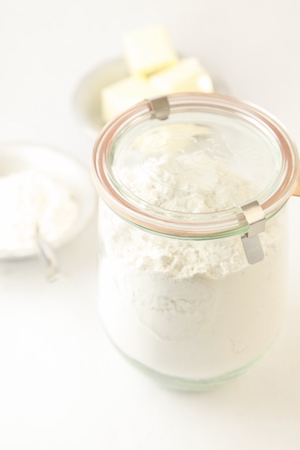
Option 1
Choose your favorite cake, muffin, brownie, cookie, or biscuit recipe. Multiply the dry ingredients times four (or other number you choose) and blend them together. Weigh and measure the ingredients into four resealable bags. Label the bags. Note what other ingredients are necessary as well as the directions on quarter sheets of paper and tuck them in the bags.
Option 2
Search for baking mix recipes online…there are numerous options! Test the recipe to be sure it works for you and then make and package mixes as described in Option 1.
Option 3
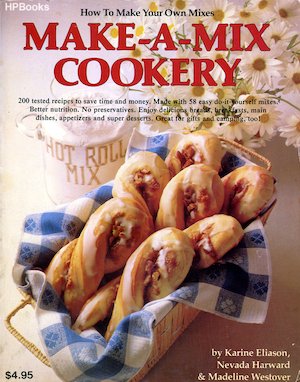
Find a copy of Make-a-Mix Cookery: How to Make Your Own Mixes by Karine Eliason, Nevada Harward, and Madeline Westover. This gem from the eighties is fabulous and contains recipes to go along with more than twenty “master mixes.” It was one of my go-to recipe books when I was raising my kids—before you could hunt down recipes online—and is still available today, including a newer 2006 edition.
Learn More
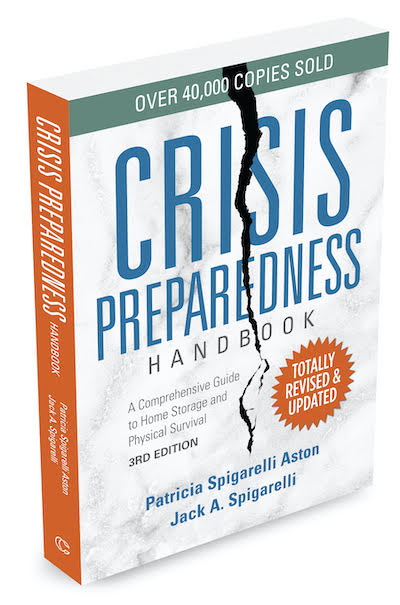
Learn more about storing foods in Crisis Preparedness Handbook, Third Edition (2020). You will find details about basic food storage as well as storing suggestions for specialty foods. You will also learn about storing water, sanitation, communication, and other important preparedness topics. If you don’t already have a copy, you can find it here on my website CrisisPreparedness.com. Or, read it on Amazon in the Kindle version or hard copy version.
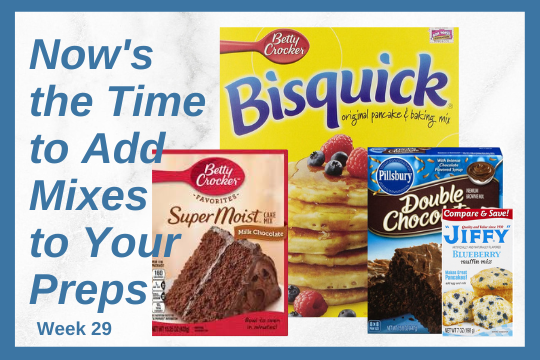


1 thought on “Now’s the Time to Add Amazing Mixes to Your Preps”
Hi do when I put the mixes in the bucket do I need to put an oxygen absorber in either in the bucket or in each plastic bag that was my big stock up this month as I did a lot of muffin mixes and brownie mix thank you